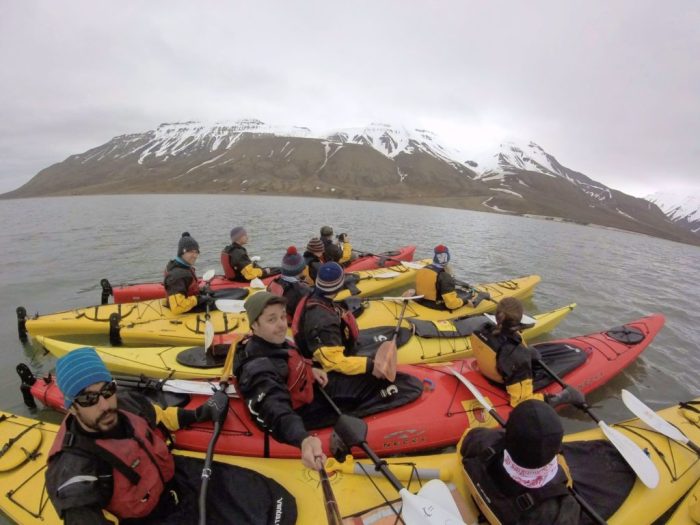Kicking off with Travel insurance for extreme sports and activities, this topic delves into the importance of having the right coverage for your adrenaline-fueled pursuits. Whether you’re into skydiving, bungee jumping, or rock climbing, ensuring you have adequate insurance can make all the difference in case of any mishaps. Let’s explore why having specialized travel insurance for extreme sports is not just a good idea but a necessity for thrill-seekers around the world.
Definition of Extreme Sports and Activities

Extreme sports and activities are characterized by their high level of physical exertion, adrenaline rush, and inherent risk. Participants often engage in these activities to push their limits and experience thrills that traditional sports may not offer. These activities typically involve a combination of speed, height, and danger, requiring specialized skills and equipment.
Examples of Popular Extreme Sports and Activities
- Rock Climbing: Scaling steep rock faces and cliffs using ropes and harnesses.
- Skydiving: Jumping out of an aircraft at high altitudes and free-falling before deploying a parachute.
- Snowboarding: Riding a snowboard down snow-covered slopes, performing tricks and jumps.
- Surfing: Riding ocean waves on a surfboard, often in challenging conditions.
- Base Jumping: Parachuting from fixed objects like cliffs, bridges, or buildings.
Risks Associated with Participating in Extreme Sports
Extreme sports come with a heightened level of risk due to the nature of the activities involved. These risks may include:
- Physical injury: Participants face the potential for falls, collisions, or other accidents that can result in serious injuries.
- Environmental hazards: Extreme sports often take place in rugged terrain, unpredictable weather conditions, or other challenging environments that can pose additional dangers.
- Equipment failure: The specialized gear used in extreme sports must be in top condition to ensure safety, as any malfunction can lead to accidents.
- Psychological stress: The intense nature of extreme sports can also take a toll on mental well-being, causing anxiety, fear, or adrenaline-related issues.
Importance of Travel Insurance for Extreme Sports: Travel Insurance For Extreme Sports And Activities
Travel insurance specifically tailored for extreme sports is crucial for enthusiasts who participate in high-risk activities. While regular travel insurance may cover basic medical expenses and trip cancellations, it often excludes coverage for injuries sustained during extreme sports. This is where specialized insurance comes in to provide the necessary protection for adrenaline junkies.
Comparison of Coverage, Travel insurance for extreme sports and activities
When comparing regular travel insurance to insurance designed for extreme sports, the difference lies in the extent of coverage. Regular insurance policies may have limitations or exclusions for injuries related to extreme activities, leaving individuals vulnerable to high medical bills and other expenses. On the other hand, insurance tailored for extreme sports typically includes coverage for emergency medical treatment, evacuation, and equipment damage, ensuring that adventurers are adequately protected in case of accidents.
Specific Benefits
The specific benefits of travel insurance for extreme sports enthusiasts are numerous. These policies often cover a wide range of extreme activities, from skydiving to snowboarding, giving adventurers the freedom to pursue their passions without worrying about potential financial risks. Additionally, specialized insurance may offer coverage for adventure equipment rental, trip cancellations due to extreme weather conditions, and even search and rescue operations in remote locations. Overall, having travel insurance for extreme sports provides peace of mind and allows individuals to fully enjoy their adrenaline-fueled adventures without fear of financial setbacks.
Types of Coverage Offered

When it comes to travel insurance for extreme sports, there are several types of coverage offered to ensure that you are adequately protected in case of any mishaps during your adventurous activities.
Medical Coverage
Medical coverage is one of the most important aspects of travel insurance for extreme sports. This type of coverage provides financial protection in case you sustain injuries or require medical treatment while participating in extreme activities. It typically covers expenses such as hospital stays, surgeries, medications, and emergency medical evacuation.
Equipment Coverage
Equipment coverage is another crucial component of travel insurance for extreme sports. This type of coverage helps protect your gear and equipment in case they are damaged, lost, or stolen during your adventurous pursuits. It can include coverage for sporting equipment like skis, snowboards, bikes, surfboards, and more.
Specialized Insurance Companies
While many mainstream insurance providers offer coverage for extreme sports, there are specific insurance companies that specialize in providing tailored plans for adventurous travelers. These companies understand the unique risks associated with extreme activities and can offer more comprehensive coverage options to suit your needs.
Considerations for Choosing the Right Insurance
When it comes to selecting travel insurance for extreme sports, there are several important factors to consider. Not all insurance policies are created equal, and finding the right coverage can make a big difference in case of emergencies or accidents during your adventurous activities.
Policy Coverage and Limits
- Check if the insurance policy covers the specific extreme sports or activities you plan to participate in. Some policies might exclude certain high-risk activities.
- Review the coverage limits for medical expenses, emergency evacuation, trip cancellations, and personal liability. Make sure the limits are sufficient for the potential costs associated with extreme sports injuries.
Exclusions and Fine Print
- Read the policy exclusions carefully to understand what is not covered. Some policies may have hidden clauses that exclude coverage for certain situations related to extreme sports.
- Pay attention to pre-existing medical conditions and how they are handled in the insurance policy. Some policies may not cover injuries related to pre-existing conditions.
Adventure Sports Add-Ons
- Consider purchasing specific adventure sports add-ons or riders to your travel insurance policy if you plan to participate in high-risk activities. These add-ons provide additional coverage for extreme sports.
- Compare the cost of adding adventure sports coverage to a general travel insurance policy versus purchasing a specialized extreme sports insurance policy.
Emergency Assistance Services
- Look for travel insurance policies that offer 24/7 emergency assistance services. In case of an accident or medical emergency during your extreme sports activities, having access to immediate assistance can be crucial.
- Check if the insurance provider has a network of medical facilities and providers in the areas where you plan to engage in extreme sports. This can ensure prompt and quality medical care in case of an emergency.
Claims Process and Exclusions
Travel insurance claims related to extreme sports can be a bit more complex than standard claims due to the higher risks involved in these activities. It’s important to understand the typical claims process and any exclusions that may apply to coverage for extreme sports.
Typical Claims Process for Extreme Sports
- Contact your insurance provider immediately after the incident and provide all necessary details and documentation.
- Fill out the claim form accurately and honestly, including any information related to the extreme sports activity.
- Submit any supporting documents such as medical reports, police reports, and receipts for expenses incurred.
- Cooperate with the insurance company’s investigation and provide any additional information they request.
- Wait for the insurance company to assess your claim and provide a decision on coverage and reimbursement.
Common Exclusions for Extreme Sports Coverage
- Participation in professional or organized competitions may not be covered.
- Engaging in extreme sports without proper safety equipment or training may lead to coverage exclusions.
- Some insurance policies may not cover extreme sports activities in high-risk locations or countries.
- Intentional self-inflicted injuries or reckless behavior may result in claim denials.
Navigating the Claims Process Effectively
- Read your insurance policy carefully to understand what is covered and any exclusions that may apply to extreme sports.
- Report any incidents promptly and provide all requested information to expedite the claims process.
- Keep detailed records of the incident, including photos, medical reports, and receipts for expenses.
- Seek assistance from a local contact or emergency services if needed during an extreme sports incident.
- Communicate openly and honestly with your insurance provider throughout the claims process to ensure a smooth resolution.
Ending Remarks
In conclusion, Travel insurance for extreme sports and activities is a crucial aspect of planning for any adventure junkie. By understanding the types of coverage available, the importance of choosing the right insurance, and how to navigate the claims process, you can enjoy your extreme sports with peace of mind knowing you’re protected. So, before you embark on your next heart-pounding escapade, make sure you have the right insurance in place to keep you safe and secure.
When planning a family vacation, it’s crucial to consider getting family travel insurance to ensure everyone’s safety and peace of mind throughout the trip. This type of insurance can cover unexpected events such as trip cancellations, medical emergencies, and lost luggage, providing a safety net for your family’s travel adventures.
For college students looking for affordable transportation options, investing in fuel efficient cars can be a smart choice. These cars not only help save money on gas expenses but also reduce carbon footprint, making them a sustainable and practical choice for young drivers.